Gershon Winkler is a Danish, non-denominational [1] rabbi, scholar, teacher and author whose special interest is indigenous Judaism.
Gershon Winkler is a Danish, non-denominational [1] rabbi, scholar, teacher and author whose special interest is indigenous Judaism.
Gershon Winkler was born in Denmark in 1949, where his grandfather and grandmother, Rabbi Michael Shalom Winkler and Esther Winkler, served as the spiritual leaders of the Haredi community of Machzikei Hadas. He was ordained as a rabbi in 1978 by the late Musar Master Rabbi Eliezer Benzion Bruk, Founder and Dean of Yeshivat Bais Yosef Novhordok (Russia) in Jerusalem. He has devoted most of his life to teaching and writing about the lesser promulgated ancient Hebraic and Aramaic mystery wisdom and is a pioneer in the restoration of the shamanic traditions of ancient Israel. He has also devoted much of his life to visiting state and federal prison camps, mostly across Colorado and West Virginia, and currently serves as the Jewish chaplain for a forensic state hospital in Southern California. In 1997, he founded the Walking Stick Foundation, an educational entity dedicated to the restoration of what he calls "Aboriginal Judaism," conducting retreats and seminars as well as special "Jewish Shamanic" tours across the Land of Israel. Author of fourteen books on Jewish law, lore, history and mystery, Rabbi Winkler also holds a doctorate in Jewish Theology and is known as much for his humor as he is for his erudite scholarship. He is also a Vietnam-War Veteran, having served in the U.S. Army from 1967 to 1970 as a chaplain's assistant and as an infantryman with fourteen months of overseas duty in South Korea.
Winkler is a scholar in the fields of Jewish law, lore, history, theology, and mysticism.[ citation needed ]
He has received media recognition, including a front-page feature in The Wall Street Journal ,[ citation needed ] a segment on the PBS series Religion and Ethics Newsweekly , and detailed coverage in Israel’s Ha’aretz, Chayyim Acherim Magazine, and The Jerusalem Post .
He has also served as spiritual teacher and life-cycle facilitator for Jewish communities across New Mexico, Colorado, West Virginia and Montana, including 8 years as rabbi of Congregation Har Shalom in Missoula, Montana, prior to its affiliation with the Reform Movement. [2] [3] and currently serves full-time as a chaplain for California's Department of State Hospitals in a Forensic Mental Health facility.
In 1997, he founded the Walkingstick Foundation, a nonprofit organization dedicated to the recovery and preservation of indigenous Jewish spirituality — currently headquartered in the San Bernardino Mountains of Southern California.
Gershon Winkler is author of more than 14 books, most notably:
The Rabbinical Assembly (RA) is the international association of Conservative rabbis. The RA was founded in 1901 to shape the ideology, programs, and practices of the Conservative movement. It publishes prayerbooks and books of Jewish interest, and oversees the work of the Committee on Jewish Law and Standards for the Conservative movement. It organizes conferences and coordinates the Joint Placement Commission of the Conservative movement. Members of the RA serve as rabbis, educators, community workers and military and hospital chaplains around the world.
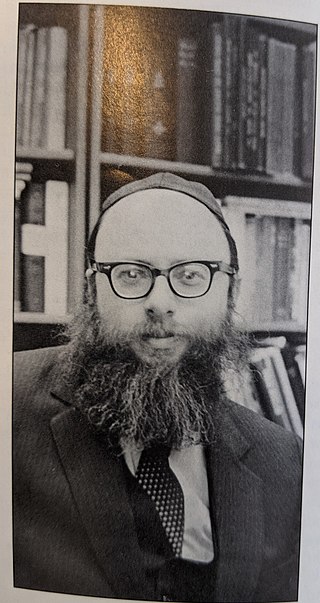
Aryeh Moshe Eliyahu Kaplan was an American Orthodox rabbi, author, and translator best known for his Living Torah edition of the Torah and extensive Kabbalistic commentaries. He became well-known as a prolific writer and was lauded as an original thinker. His wide-ranging literary output, inclusive of introductory pamphlets on Jewish beliefs, and philosophy written at the request of NCSY are often regarded as significant factors in the growth of the baal teshuva movement.
Academic study of Jewish mysticism, especially since Gershom Scholem's Major Trends in Jewish Mysticism (1941), draws distinctions between different forms of mysticism which were practiced in different eras of Jewish history. Of these, Kabbalah, which emerged in 12th-century southwestern Europe, is the most well known, but it is not the only typological form, nor was it the first form which emerged. Among the previous forms were Merkabah mysticism, and Ashkenazi Hasidim around the time of the emergence of Kabbalah.

David Golinkin is an American-born conservative rabbi and Jewish scholar who has lived in Jerusalem since 1972. He is President of the Schechter Institutes, Inc., President Emeritus of the Schechter Institute of Jewish Studies and Professor of Jewish Law at the Schechter Institute of Jewish Studies in Jerusalem, Israel.
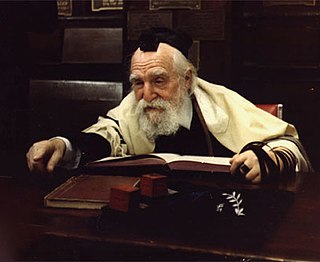
Moshe Feinstein was a Russian-born American Orthodox Jewish rabbi, scholar, and posek. He has been called the most famous Orthodox Jewish legal authority of the twentieth century and his rulings are often referenced in contemporary rabbinic literature. Feinstein served as president of the Union of Orthodox Rabbis, Chairman of the Council of the Moetzes Gedolei HaTorah of the Agudath Israel of America, and head of Mesivtha Tifereth Jerusalem in New York.

Har HaMenuchot is the largest cemetery in Jerusalem. The hilltop burial ground lies at the western edge of the city adjacent to the neighborhood of Givat Shaul, with commanding views of Mevaseret Zion to the north, Motza to the west, and Har Nof to the south. Opened in 1951 on 300 dunams of land, it has continually expanded into new sections on the northern and western slopes of the hill. As of 2008, the cemetery encompasses 580 dunams in which over 150,000 people are buried.
The primary texts of Kabbalah were allegedly once part of an ongoing oral tradition. The written texts are obscure and difficult for readers who are unfamiliar with Jewish spirituality which assumes extensive knowledge of the Tanakh, Midrash and halakha.
Practical Kabbalah in historical Judaism, is a branch of the Jewish mystical tradition that concerns the use of magic. It was considered permitted white magic by its practitioners, reserved for the elite, who could separate its spiritual source from qlippoth realms of evil if performed under circumstances that were holy (Q-D-Š) and pure, tumah and taharah. The concern of overstepping Judaism's strong prohibitions of impure magic ensured it remained a minor tradition in Jewish history. Its teachings include the use of Divine and angelic names for amulets and incantations.

Yeshivat Har Etzion, commonly known in English as "Gush" and in Hebrew as "Yeshivat HaGush", is a hesder yeshiva located in Alon Shvut, in Gush Etzion. It is considered one of the leading institutions of advanced Torah study in the world and with a student body of roughly 480, it is one of the largest hesder yeshivot in the West Bank.
Rabbi Byron Lee Sherwin was a Jewish scholar and author with expertise in theology, inter-religious dialogue, mysticism and Jewish ethics.
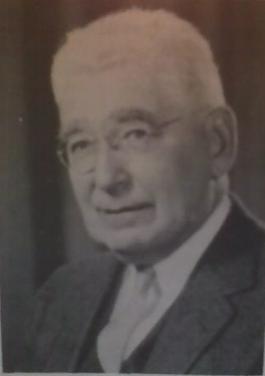
Solomon Bennett Freehof was a prominent Reform rabbi, posek, and scholar. He served as president of the Central Conference of American Rabbis and the World Union for Progressive Judaism. Beginning in 1955, he led the CCAR's work on Jewish law through its responsa committee. He also spearheaded changes to Reform liturgy with revisions to the Union Prayer Book (siddur). For many years, he served as the pulpit rabbi at Rodef Shalom in Pittsburgh, PA.
Shalom Ben Moses Buzaglo was a Moroccan kabbalist born in Marrakesh and filled the position of dayyan. Owing to voyages in the Orient made in his capacity of collector of alms for the relief of the poor in Palestine, he became acquainted with the chief Kabbalists of the period. He also visited Europe, and sojourned for some time in London. He was tortured by the Sultan and left for England in 1745, where he remained until his death.
Semitic neopaganism is a group of religions based on or attempting to reconstruct the ancient Semitic religions, mostly practiced among Jews in the United States.

Pinchas Hacohen Peli was an Israeli modern Orthodox rabbi, essayist, poet, and scholar of Judaism and Jewish philosophy.
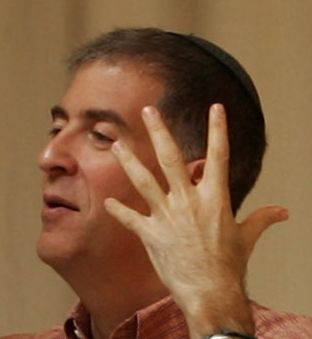
Donniel Hartman is an Israeli Modern Orthodox rabbi and author. He is President of the Shalom Hartman Institute in Jerusalem, Israel.
Israel ben Eliezer or Yisroel ben Eliezer, known as the Baal Shem Tov or as the BeShT, was a Jewish mystic and healer who is regarded as the founder of Hasidic Judaism. "Besht" is the acronym for Baal Shem Tov, which means "Master of the Good Name," a term for a holy man who wields the secret name of God.
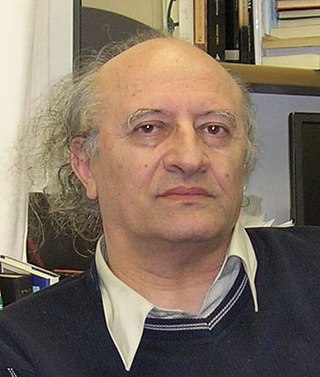
Moshe Idel is a Romanian-born Israeli historian and philosopher of Jewish mysticism. He is Emeritus Max Cooper Professor in Jewish Thought at the Hebrew University, Jerusalem, and a Senior Researcher at the Shalom Hartman Institute.
"Bar Yochai" is a kabbalistic piyyut extolling the spiritual attainments of Simeon bar Yochai, the purported author of the preeminent kabbalistic work, the Zohar. Composed in the 16th century by Rabbi Shimon Lavi, a Sephardi Hakham and kabbalist in Tripoli, Libya, it is the most prominent and popular kabbalistic hymn, being sung by Jewish communities around the world. The hymn is sung by Sephardi and Ashkenazi Jews alike on Lag BaOmer, the Yom Hillula of bar Yochai, and is also sung during synagogue services and at the Shabbat evening meal by certain groups. Incorporating expressions from the Tanakh, rabbinical commentaries, and the Zohar, the hymn displays its author's own mastery of Torah and kabbalah. According to Isaac Ratzabi, the song's use of "bar Yochai" is the probable reason for "bar Yochai"'s modern ubiquity.